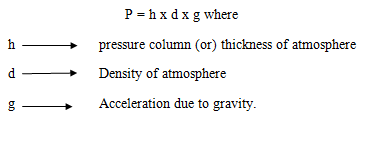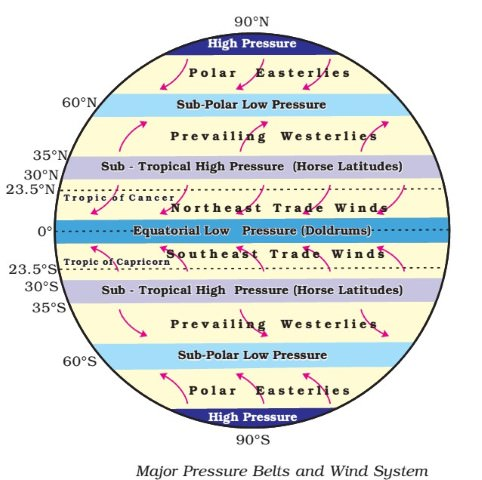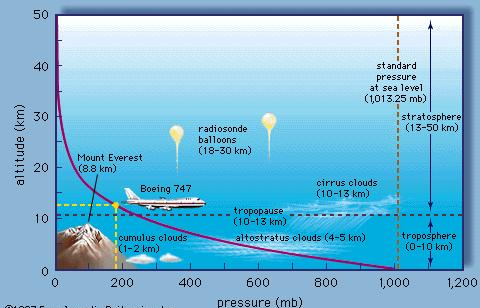There are seven atmospheric pressure belts present on the surface of the earth. There is an uneven distribution of pressure on earth. The pressure is used to get reduced with altitude and it is inversely proportional to temperature. However, major factors for the earth’s atmospheric pressure are the earth’s rotation and ascent-descent of air.
Vertical Distribution of Atmospheric Pressure

Atmosphere pressure at sea level is equal to 1013.2 millibars atmospheric pressure declines with an increase in attitude because the thickness of the atmosphere, as well as density, declines with altitude.
At an altitude of 5 km, atmospheric pressure reaches a constant value of 540 millibars. It is represented using pressure belts which are zones of high and low pressure on sea level there are 7 atmospheric pressure belts in all North Zone.


Based on origin, pressure belt are broadly classified into the following categories
Thermally Originated Pressure Belts
Equatorial Low-Pressure Belt
At the equator, the mid-day sun is directly overhead. The equator, therefore, gets heated up making the air above it hot and light. The light and hot air rise vertically up creating low pressure. This thermal heating and expansion of air create convection is called an Air Current. The equatorial region is thus dominated by strong air currents. Since vertical movement exists there will not be any horizontal movement of air. Consequently, the equatorial region is also known as the region of doldrums.
Because the region is windless owing to strong air currents, the low-pressure belt is compensated by incoming trade winds (NE & SE trade winds) converging at the equator. This is why the equatorial low-pressure belt is also called the Inter-Tropical Zone of convergence (ITCZ). The ITCZ shifts twice- once to the tropic of cancer during the summer solstice and once during the winter solstice traversing the equator twice during the equinoxes.
Polar High-Pressure Belt
Since the poles are covered with ice, the heat transfer is from the atmosphere to the land surface. As a result, the atmosphere undergoes thermal cooling and contraction. The air is therefore at low temperature and high pressure.
Dynamically Originating Pressure Belts
Sub- Tropical High-Pressure belts
This belt extends to the region between 25° -35° latitudes on both hemispheres. This high-pressure belt is a dynamically originating pressure belt because it owes its origin to the adiabatic of the underlying air mass by the descending air mass. The convergence of winds at the higher altitudes above this zone results in the subsidence of air from higher altitudes. Thus dissent of wind results in the contraction of volume and thereby courses high pressure. This zone also receives a fairly high amount of sunshine almost throughout the year. This belt owes its origin, thus, to the rotation of the earth and the settling down of winds.
Due to this high temperature and more importantly high pressure, this a region of Anticyclonic conditions that causes atmospheric stability and aridity, especially on the western coast of continents where the winds are offshore. The presence of hot deserts in the western part of hot between 25°-35° in each hemisphere is due to the aforementioned reason. The latitude 25°-35° is also called Horse latitudes because of the prevalence of frequent calms.
Sub Polar Low-Pressure Belts
The subpolar low-pressure belt is located between 60°-65° latitudes in both hemispheres. This is not a thermally induced pressure belt since low temperatures here should actually result in high pressures but instead, the opposite is true. This belt is a dynamically induced low-pressure belt because here the surface air spreads outward due to the rotation of the earth. This faction is more prominent in the southern hemisphere whereas it is broken in the northern hemisphere due to the presence of water in the former.
Thus, the subpolar low-pressure belts are well developed and continuous in the southern hemisphere whereas, in the northern hemisphere, it is in the form of broken low-pressure cells over the ocean. The presence of landmass or continents causes greater contrasts of temperature [continentality] during the summer. This is why this pressure belt exists in cells over the ocean here. E.g. the Aleutian low over the Pacific and the Icelandic low over the Atlantic.

